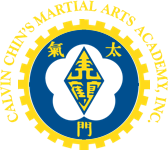The History of Mu Dong
Ng Kam-Lau
The Mu Dong - Yat Hei Ngm Hahng Morn system was founded by Sit Chun-Yuk of Chieh Kong village in China. Sit was a student of the Shaolin system before he studied Mu Dong, an internal system from the neighboring Mu Dong (Wudang) mountain region. He trained under the guidance of Yik Wai-Chun, became his disciple, but also studied from Kuo Wei-Jin, (Hao Wei-Zheng) founder of another internal system, Hao style tai chi. Upon completing his studies, Sit integrated the essence of the Snake form from the Shaolin system, the Hsing I and Pa Kua styles from the Mu Dong system, and Hao style tai chi, a derivative from the Wu (Yu-Seong) branch. From these influences, Sit founded Mu Dong - Yat Hei Ngm Hahng Morn, a system that exemplifies the internal and external elements of a refined martial art.
During the Sino-Japanese War, Sit and his daughter, Sit Wai-Lan took refuge in Southern China. He became a casualty of the war, leaving his daughter to survive as a martial arts performer in a traveling road show. Sit Wai-Lan, famous for juggling seven sharp daggers was seen during one of her performances by Ma Duc-Sun, a doctor of Chinese medicine. Ma was captivated by her skill, and through his perseverance, was accepted as her student, and later, as her disciple.
After the revolution in China, Ma departed for Hong Kong. Although he never established a school, he did accept many disciples, including Ng Kam-Lau. In Hong Kong, Ng befriended Kwong Tit-Fu, a noted Hung Gar Tiger Crane instructor of the Lam lineage. Kwong became his student and years later a disciple of Mu Dong - Yat Hei Ngm Hahng Morn.
In 1970, Kwong immigrated to the United States where he met Calvin Chin. Chin secured a job for Kwong as a martial arts instructor at his youth athletic club. In 1972, Chin became Kwong’s disciple and helped him establish the Academy of Chinese Martial Arts, formally of Boston’s Chinatown. After years of training and reflection, Kwong founded the Fu Hok Tai He Morn system. This system is a teaching methodology that incorporates the principles and concepts of Mu Dong - Yat Hei Ngm Hahng Morn, Hung Gar Tiger Crane Kung Fu, and Wu (Chien-Chuan) style tai chi. Each system maintains its traditional sequences; all have been enhanced by the interdisciplinary exchange of theories. According to Ng, after Kwong’s passing in 1999, Chin became the only active instructor of the Mu Dong - Yat Hei Ngm Hahng Morn system. Chin is also the top disciple and successor of the Fu Hok Tai He Morn system.
The Practice of Mu Dong
This system is related to the philosophy of tai chi, where opposite attributes compliment one another. Similar to the internal system, the interaction of gong (hardness/energetic) and yau (softness/suppleness) in the Mu Dong - Yat Hei Ngm Hahng Morn system culminates into the explosive force called fajin. Like some external systems, movements have specific purposes. In Mu Dong - Yat Hei Ngm Hahng Morn, correlation is made to the five elements (Ngm Hahng, Wu Hsing) that represent fire, earth, metal, water and wood and movement interact by complementing or opposing one another. One learns to identify each movement to the corresponding element and use the contending movement to overcome the opponent. The training method is designed to facilitate the development and refinement of high-level techniques through a series of exercises, drills and sequences rendered from precise body alignment and synchronized with upper and lower coordination.


